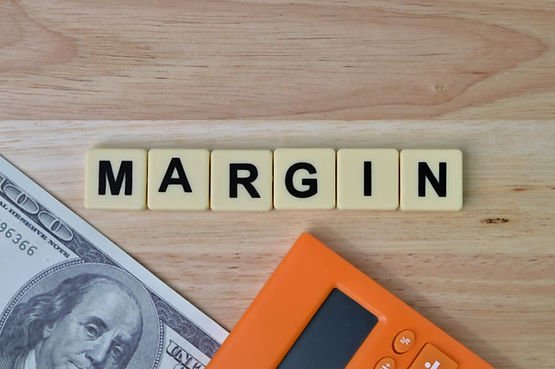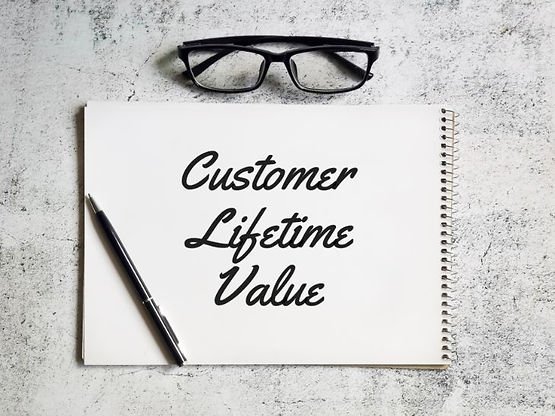4. Inventory Performance Index (IPI)
8. Return on Advertising Spend (ROAS)
10. Customer Lifetime Value (CLV)
Attention, Amazon FBA trailblazers! The time has come to embark on a thrilling expedition into the heart of data analytics. Fear not, for our trusty compass will guide you through the wilderness of metrics, pointing you to the most important indicators of your FBA success. Get ready to measure your Sales Velocity with the precision of a cheetah, optimize your Conversion Rate, and dominate the elusive Buy Box. We’ll reveal the secrets of the Inventory Performance Index (IPI), Order Defect Rate (ODR), and the ever-important Seller Feedback Rating. But wait, there’s more! Prepare to delve into the mystic realms of Fulfillment costs, Return on Advertising Spend (ROAS), Gross Profit Margin, and the invaluable Customer Lifetime Value (CLV). So lace up your boots and grab your trusty binoculars; it’s time to conquer the wild world of Amazon FBA metrics!
1. Sales Velocity

Ready to kick your Amazon FBA sales into high gear? Strap in and let’s explore the concept of Sales Velocity, a key metric that’s sure to rev up your engine for success.
Understanding Sales Velocity
Sales Velocity is the speed at which your products are selling on Amazon. In other words, it’s the rate at which your inventory turns into cold, hard cash. The formula to calculate Sales Velocity is as follows:
Sales Velocity = (Units Sold ÷ Time Period) x Average Selling Price
By tracking this metric, you can gain valuable insights into your sales trends, inventory management, and pricing strategy.
The Importance of Sales Velocity
Now that you’ve got a grip on what Sales Velocity is, let’s look at why it’s crucial to keep an eye on it:
Amazon’s Algorithm
Amazon’s A9 algorithm takes Sales Velocity into account when determining product rankings. A higher Sales Velocity can lead to better rankings, which in turn translates into increased visibility and sales.
Inventory Management
Monitoring Sales Velocity helps you identify fast-moving and slow-moving products, enabling you to optimize your inventory levels, reduce storage costs, and avoid stockouts.
Pricing Strategy
Understanding your Sales Velocity can help you fine-tune your pricing strategy, ensuring you’re not leaving money on the table while remaining competitive in the market.
Tips to Increase Sales Velocity
Ready to shift your Sales Velocity into overdrive? Here are some turbocharged tips to get you there:
Optimize Your Listings
Ensure your product listings are polished and professional, with high-quality images, compelling titles, and informative bullet points. This will help attract more customers and boost your sales.
Run Promotions
Use promotional tools like Lightning Deals, coupons, and discounts to entice customers and spur sales.
Leverage Amazon Advertising
Utilize Amazon Advertising, including Sponsored Products and Sponsored Brands, to increase visibility and drive traffic to your listings.
Bundle Products
Offering bundles or multi-packs can increase the perceived value and encourage customers to purchase more items in a single transaction, raising your Sales Velocity.
Strengthen Your Reviews
Encourage satisfied customers to leave positive reviews, as they can greatly influence purchasing decisions and help improve your Sales Velocity.
By mastering Sales Velocity and implementing these strategies, you’ll be well on your way to accelerating your Amazon FBA success. Fasten your seatbelt, and enjoy the ride!
2. Conversion Rate

Ready to transform your Amazon FBA business into a sales powerhouse? It’s time to dive into Conversion Rate, a metric that can help you unlock your true selling potential.
Understanding Conversion Rate
Conversion Rate is the percentage of visitors to your product listings who actually make a purchase. It’s the ultimate measure of how effectively you’re turning window shoppers into paying customers. To calculate the Conversion Rate, use the following formula:
Conversion Rate = (Number of Sales ÷ Number of Listing Views) x 100
By keeping a close eye on this metric, you’ll be able to fine-tune your Amazon FBA business for maximum sales performance.
The Importance of Conversion Rate
Wondering why the Conversion Rate is such a big deal? Here are a few reasons why it’s essential to monitor and optimize this metric:
Sales Performance
A higher Conversion Rate means you’re effectively converting more listing views into actual sales, which translates to increased revenue.
Amazon’s Algorithm
Amazon’s search algorithm takes Conversion Rate into account when determining product rankings. A better Conversion Rate can lead to improved rankings and greater visibility on the platform.
Cost Efficiency
By focusing on improving your Conversion Rate, you can make the most of the existing traffic to your listings, resulting in more sales without having to spend extra on advertising.
Tips to Boost Your Conversion Rate
Now that you understand the importance of Conversion Rate, here are some game-changing tips to help you send it soaring:
Improve Your Reviews
Positive reviews and high ratings can have a significant impact on your Conversion Rate. Encourage happy customers to leave reviews, and address any negative feedback promptly and professionally.
Offer Competitive Pricing
Keep an eye on your competitors and make sure your pricing is in line with the market. A competitive price point can be the key to winning over hesitant buyers.
Enhance Your Product Descriptions
Tell a compelling story with your product descriptions, highlighting the benefits and features that set your product apart. A well-crafted description can be the difference between a sale and a missed opportunity.
Utilize A+ Content
Use Amazon’s A+ Content feature to showcase your products in a visually engaging and informative way, making it easier for customers to understand the value you’re offering.
By focusing on Conversion Rate and implementing these powerful strategies, you’ll be well on your way to unlocking the sales powerhouse that is your Amazon FBA business. Get ready to watch your sales take off!
3. Buy Box Percentage

Are you ready to seize the crown and rule the Amazon FBA kingdom? Let’s explore Buy Box Percentage, a metric that can help you secure your reign at the top.
Understanding Buy Box Percentage
Buy Box Percentage refers to the share of time your product is featured in the coveted Amazon Buy Box, which is the prime real estate on a product listing page where customers can add the item to their cart. To calculate Buy Box Percentage, use the following formula:
Buy Box Percentage = (Time Your Product Occupies the Buy Box ÷ Total Time) x 100
By keeping track of this metric, you’ll be better equipped to secure your spot in the Buy Box and reap the rewards that come with it.
The Importance of Buy Box Percentage
Wondering why Buy Box Percentage is worth your attention? Here are some compelling reasons:
Increased Sales
Being featured in the Buy Box has a significant impact on sales, as the majority of customers make their purchases through it. A higher Buy Box Percentage translates to more sales and revenue.
Enhanced Visibility
The Buy Box is prominently displayed on product listing pages, which means securing it gives your product greater visibility and a better chance of attracting potential buyers.
Competitive Edge
Winning the Buy Box can give you an edge over your competition by making your product the default choice for customers to add to their cart.
Tips to Improve Your Buy Box Percentage
Ready to claim your throne and boost your Buy Box Percentage? Here are some regal tips to help you achieve just that:
Perfect Your Pricing
Ensure your pricing is competitive by regularly monitoring your competitors and adjusting your prices accordingly. Remember, a lower price isn’t the only factor, but it plays a significant role.
Maintain Inventory
Consistently keeping products in stock and avoiding stockouts can improve your chances of winning the Buy Box. Amazon favors sellers who can reliably fulfill orders.
Opt for FBA
Using Amazon’s Fulfillment by Amazon (FBA) service can enhance your chances of securing the Buy Box, as Amazon gives preference to FBA sellers due to their reliable fulfillment process.
Deliver Stellar Customer Service
Amazon takes seller performance metrics into account when determining Buy Box eligibility. Strive for excellent customer service, quick response times, and prompt resolution of any issues.
Achieve a High Seller Rating
A high seller rating is a key factor in winning the Buy Box. Maintain a great rating by providing top-notch service, fulfilling orders quickly, and keeping customers satisfied.
By focusing on Buy Box Percentage and implementing these royal strategies, you’ll be well on your way to ruling the Amazon FBA kingdom with your Buy Box success. Long live the Buy Box King (or Queen)!
4. Inventory Performance Index (IPI)

Ready to conquer the world of inventory management and elevate your Amazon FBA business to new heights? Let’s tackle the Inventory Performance Index (IPI), a metric that can help you optimize your inventory like a true maestro.
Understanding IPI
The Inventory Performance Index (IPI) is a score that Amazon assigns to FBA sellers, reflecting how effectively they manage their inventory. This metric takes into account factors such as excess inventory, in-stock rates, and sell-through rates. IPI scores range from 0 to 1,000, with a higher score indicating better inventory management.
The Importance of IPI
You might be wondering why IPI is a metric worth your attention. Here are some reasons why it’s crucial to keep an eye on your IPI score:
Storage Limits
Amazon imposes storage limits for FBA sellers based on their IPI score. A higher IPI score can grant you more storage space and flexibility in managing your inventory.
Cost Efficiency
By optimizing your IPI score, you can reduce storage fees, avoid long-term storage charges, and minimize the risk of stockouts or overstocking.
Operational Efficiency
A well-managed inventory enables you to respond more effectively to fluctuations in demand, ensuring your business remains agile and adaptable.
Tips to Improve Your IPI Score
Ready to fine-tune your inventory management skills and boost your IPI score? Here are some masterful tips to help you achieve just that:
Monitor Inventory Levels
Keep a close eye on your inventory levels and replenish popular items before they run out. This will help maintain a high in-stock rate, which positively impacts your IPI score.
Optimize Your Product Selection
Focus on stocking products that have a high turnover rate and low storage costs. This will contribute to a better sell-through rate and a higher IPI score.
Use Amazon’s, Restock Tool
Leverage Amazon’s Restock Tool to receive personalized recommendations on which products to replenish and when. This can help you make more informed decisions about managing your inventory.
Remove Excess Inventory
Identify slow-moving or obsolete items and take action to liquidate, dispose of, or return them. This will reduce your excess inventory and improve your IPI score.
Analyze Sales Data
Regularly review your sales data and historical trends to forecast demand accurately. This will enable you to make smarter inventory decisions and maintain an optimal IPI score.
By honing your Inventory Performance Index and implementing these virtuoso strategies, you’ll be well on your way to mastering the art of inventory management and taking your Amazon FBA business to new heights. Bravo!
5. Order Defect Rate (ODR)

Ready to sail smoothly through the seas of customer satisfaction and steer your Amazon FBA business toward success? Let’s embark on a journey to explore Order Defect Rate (ODR), a metric that can help you navigate these waters with ease.
Understanding ODR
Order Defect Rate (ODR) is a metric that measures the percentage of orders with a negative customer experience, such as a cancellation, return, or negative feedback. To calculate ODR, use the following formula:
ODR = (Number of Defective Orders ÷ Total Number of Orders) x 100
By keeping track of this metric, you’ll be better equipped to identify issues, improve customer satisfaction, and maintain a healthy Amazon FBA business.
The Importance of ODR
Wondering why ODR is worth charting on your map to success? Here are some reasons why it’s crucial to monitor and improve this metric:
Seller Performance
A low ODR indicates that you’re providing a positive customer experience, which contributes to a strong seller performance rating on Amazon.
Account Health
Amazon considers ODR as a key factor in evaluating your account health. A high ODR can lead to account warnings, suspensions, or even termination.
Customer Loyalty
By reducing your ODR, you can enhance customer satisfaction and encourage repeat business, resulting in increased sales and revenue.
Tips to Reduce Your ODR
Ready to navigate the waters of customer satisfaction and lower your ODR? Here are some smooth-sailing tips to help you achieve just that:
Provide Accurate Product Information
Ensure your product listings are clear, accurate, and informative, reducing the likelihood of returns and customer dissatisfaction.
Offer Top-Notch Customer Service
Respond promptly to customer inquiries, address concerns, and resolve issues professionally. This can help prevent negative feedback and improve your ODR.
Monitor Your Fulfillment Process
Keep a close eye on your fulfillment process, whether you use FBA or a third-party service, to minimize shipping errors and delays.
Implement Quality Control
Establish a robust quality control system to catch and address any issues with your products before they reach your customers.
Learn from Mistakes
Analyze the reasons behind your defective orders, and use this information to make improvements and prevent similar issues from occurring in the future.
By focusing on Order Defect Rate and implementing these navigational strategies, you’ll be well on your way to steering your Amazon FBA business towards success and customer satisfaction. Anchors aweigh!
6. Seller Feedback Rating

Ready to ascend the ladder of trust and credibility in the Amazon FBA world? Let’s explore Seller Feedback Rating, a metric that can help you reach new heights in the eyes of your customers.
Understanding Seller Feedback Rating
Seller Feedback Rating is a measure of customer satisfaction with your overall service as an Amazon seller. It’s based on a 5-star scale, with customers rating their experience on factors such as shipping, communication, and item quality. Your average rating is displayed on your seller profile, and it can have a significant impact on your reputation and success.
The Importance of Seller Feedback Rating
Curious why Seller Feedback Rating is worth your attention? Here are some reasons why it’s crucial to maintain a high rating:
Trust and Credibility
A high Seller Feedback Rating helps to build trust and credibility with potential customers, making them more likely to choose your products over competitors.
Buy Box Eligibility
A strong Seller Feedback Rating can enhance your chances of winning the Buy Box, as Amazon considers seller performance when determining eligibility.
Organic Visibility
A high rating can lead to better organic visibility, as Amazon’s search algorithm factors in seller reputation when ranking products.
Tips to Improve Your Seller Feedback Rating
Ready to climb the ladder of trust and credibility and boost your Seller Feedback Rating? Here are some tips to help you reach the summit:
Deliver Stellar Customer Service
Respond to customer inquiries promptly and professionally, and address any issues or concerns with empathy and understanding.
Ship Orders Quickly
Ensure you’re fulfilling and shipping orders in a timely manner to minimize shipping delays and keep customers satisfied.
Accurate Product Listings
Provide detailed, accurate, and honest product listings to reduce the likelihood of returns and negative feedback.
Encourage Positive Feedback
Ask your satisfied customers to leave positive feedback on your seller profile, showcasing your commitment to excellent service.
Handle Negative Feedback
If you receive negative feedback, address it professionally, and try to resolve the issue. In some cases, you can even request the removal of unjustified negative feedback from Amazon.
By focusing on Seller Feedback Rating and implementing these sky-high strategies, you’ll be well on your way to elevating your Amazon FBA business to new heights of trust and credibility. Onward and upward!
7. Fulfillment Costs

Are you ready to embark on a treasure hunt for greater profitability in your Amazon FBA business? Let’s uncover the secrets of Fulfillment Costs, a metric that can help you dig up hidden profits and optimize your operations.
Understanding Fulfillment Costs
Fulfillment Costs refer to the expenses associated with storing, packing, shipping, and handling your products within the Amazon FBA ecosystem. These costs can include:
- Amazon FBA fees
- Shipping fees
- Storage fees
- Long-term storage fees
- Returns processing fees
By keeping a watchful eye on your Fulfillment Costs, you can identify areas for improvement and enhance your profitability.
The Importance of Fulfillment Costs
Wondering why Fulfillment Costs are worth digging into? Here are some reasons why it’s crucial to monitor and optimize these expenses:
Profit Margin Protection
High Fulfillment Costs can eat into your profit margins, making it essential to keep these expenses in check to maintain healthy profitability.
Competitive Edge
By optimizing your Fulfillment Costs, you can reduce your overall expenses, enabling you to price your products more competitively and potentially win more sales.
Scalability
Efficiently managing your Fulfillment Costs can help you scale your Amazon FBA business, allowing you to grow and expand with ease.
Tips to Optimize Your Fulfillment Costs
Ready to unearth the hidden treasure and optimize your Fulfillment Costs? Here are some gold nuggets of wisdom to help you strike it rich:
Optimize Packaging
Use lightweight, compact packaging that complies with Amazon’s guidelines to reduce shipping and storage fees.
Use Amazon’s FBA Fee Calculator
Leverage Amazon’s FBA Fee Calculator to estimate and compare fulfillment costs for different products, helping you make more informed decisions about your product selection.
Explore Amazon’s Programs
Consider participating in Amazon’s programs, such as the FBA Small and Light Program or the Amazon Partnered Carrier Program, to take advantage of discounted shipping rates and reduced fees.
Periodically Review Fulfillment Costs
Regularly review your Fulfillment Costs and look for opportunities to negotiate better rates with suppliers or streamline your processes to reduce expenses.
By focusing on Fulfillment Costs and implementing these treasure-seeking strategies, you’ll be well on your way to unearthing hidden profits and optimizing your Amazon FBA business. X marks the spot!
8. Return on Advertising Spend (ROAS)

Ready to channel your inner marketing maestro and fine-tune your Amazon FBA advertising campaigns? Let’s dive into Return on Advertising Spend (ROAS), a metric that can help you orchestrate a harmonious blend of advertising efficiency and profitability.
Understanding ROAS
Return on Advertising Spend (ROAS) is a metric that measures the effectiveness of your advertising campaigns by comparing the revenue generated by your ads to the amount you spent on them. To calculate ROAS, use the following formula:
ROAS = (Ad Revenue ÷ Ad Spend) x 100
A higher ROAS indicates a more efficient and profitable advertising campaign, helping you make the most of your marketing budget.
The Importance of ROAS
Wondering why ROAS is worth striking a chord with? Here are some reasons why it’s crucial to monitor and optimize this metric:
Budget Optimization
By tracking your ROAS, you can identify which campaigns and ad strategies are delivering the best return on investment, allowing you to allocate your budget more effectively.
Profitability
Optimizing your ROAS can directly impact your overall profitability, as it helps ensure you’re generating more revenue from your ads than you’re spending on them.
Data-Driven Decision Making
ROAS provides valuable insights that can inform your marketing decisions, helping you fine-tune your campaigns and target the most lucrative audience segments.
Tips to Improve Your ROAS
Ready to unleash your inner marketing maestro and boost your ROAS? Here are some crescendo-worthy tips to help you achieve advertising harmony:
Refine Your Targeting
Use Amazon’s audience targeting options to reach potential customers who are more likely to convert, reducing wasted ad spend and increasing your ROAS.
Experiment with Ad Types
Test different ad formats, such as Sponsored Products, Sponsored Brands, and Sponsored Display Ads, to find the most effective options for your products and goals.
Optimize Your Bids
Regularly review and adjust your keyword bids to ensure you’re not overspending on low-performing keywords or missing out on opportunities for high-performing ones.
A/B Test Ad Creatives
Experiment with different ad creatives, including copy, images, and calls to action, to determine which combinations resonate best with your audience and yield the highest ROAS.
Analyze and Adjust
Continuously monitor your ROAS and use the insights gained to make data-driven adjustments to your campaigns, maximizing their efficiency and profitability.
By focusing on Return on Advertising Spend and implementing these symphonic strategies, you’ll be well on your way to orchestrating a harmonious blend of advertising efficiency and profitability for your Amazon FBA business. Encore!
9. Gross Profit Margin

Are you ready to paint a vivid picture of financial success for your Amazon FBA business? Let’s explore Gross Profit Margin, a metric that can help you create a colorful and detailed portrait of your business’s profitability.
Understanding Gross Profit Margin
Gross Profit Margin is a financial metric that measures the percentage of revenue that remains after accounting for the direct costs associated with producing and selling your products. To calculate Gross Profit Margin, use the following formula:
Gross Profit Margin = ((Revenue – Cost of Goods Sold) ÷ Revenue) x 100
A higher Gross Profit Margin indicates that your business is generating more profit for each dollar of revenue, providing a solid foundation for growth and sustainability.
The Importance of Gross Profit Margin
Curious why Gross Profit Margin is worth adding to your financial palette? Here are some reasons why it’s crucial to monitor and improve this metric:
Financial Health
A strong Gross Profit Margin is an indicator of your business’s overall financial health, helping to ensure that you’re generating sufficient profit to cover operational expenses and invest in growth.
Competitive Advantage
By improving your Gross Profit Margin, you can gain a competitive edge by pricing your products more attractively or investing in marketing and product development.
Decision-Making
Gross Profit Margin provides valuable insights that can inform your business decisions, such as product selection, pricing strategies, and supplier negotiations.
Tips to Improve Your Gross Profit Margin
Ready to craft a masterpiece of financial success and boost your Gross Profit Margin? Here are some artistic tips to help you achieve just that:
Optimize Product Costs
Negotiate with suppliers for better pricing, explore bulk-purchasing discounts, or consider alternative materials that maintain quality while reducing costs.
Streamline Your Inventory
Focus on high-margin products and eliminate slow-moving or low-margin items that can drag down your overall Gross Profit Margin.
Enhance Product Value
Find ways to add value to your products, such as improved packaging, bundled offerings, or premium features, enabling you to charge a higher price without increasing costs.
Minimize Waste and Returns
Implement quality control measures and accurate product listings to reduce waste and returns, ultimately lowering your Cost of Goods Sold and boosting your Gross Profit Margin.
Increase Operational Efficiency
Look for ways to streamline your operations, such as automating routine tasks or leveraging technology, to minimize overhead expenses and enhance your profitability.
By focusing on Gross Profit Margin and implementing these creative strategies, you’ll be well on your way to painting a vibrant picture of financial success for your Amazon FBA business. Let your inner artist shine!
10. Customer Lifetime Value (CLV)

Are you ready to embark on a quest to unearth the hidden gems of long-term profitability for your Amazon FBA business? Let’s delve into Customer Lifetime Value (CLV), a metric that can help you discover the true worth of your customers and forge lasting relationships.
Understanding Customer Lifetime Value
Customer Lifetime Value (CLV) is a prediction of the net profit attributed to the entire future relationship with a customer. In simpler terms, it’s an estimate of how much profit a single customer will generate for your business over time. To calculate CLV, you’ll need to consider factors such as:
- Average purchase value
- Purchase frequency
- Customer lifespan
A higher CLV indicates that your customers are generating more profit for your business, highlighting the importance of retaining and nurturing these valuable relationships.
The Importance of Customer Lifetime Value
Wondering why Customer Lifetime Value is worth mining for? Here are some reasons why it’s crucial to monitor and optimize this metric:
Customer Retention
Focusing on CLV can help you identify strategies to retain customers and keep them coming back, ultimately boosting your long-term profitability.
Acquisition Cost Justification
A higher CLV allows you to justify spending more on acquiring new customers, as the long-term profit potential offsets the initial acquisition costs.
Targeted Marketing
CLV insights can help you refine your marketing efforts, ensuring you’re targeting high-value customers who are more likely to generate substantial profits over time.
Tips to Improve Your Customer Lifetime Value
Ready to uncover hidden treasures and boost your Customer’s Lifetime Value? Here are some gemstone-worthy tips to help you achieve long-term profitability:
Exceptional Customer Service
Providing top-notch customer service can increase customer satisfaction and loyalty, encouraging repeat purchases and positive reviews.
Personalization
Use customer data to create personalized marketing campaigns and product recommendations, making your customers feel valued and increasing the likelihood of repeat business.
Loyalty Programs
Implement loyalty programs, such as discounts or rewards, to incentivize repeat purchases and forge long-lasting customer relationships.
Upselling and Cross-selling
Encourage customers to buy more or higher-value products by employing effective upselling and cross-selling techniques, ultimately increasing your CLV.
Continuous Improvement
Regularly solicit customer feedback and use it to enhance your products, services, and overall customer experience, ensuring you’re meeting and exceeding your customers’ expectations.
By focusing on Customer Lifetime Value and implementing these treasure-seeking strategies, you’ll be well on your way to unraveling the hidden gems of long-term profitability for your Amazon FBA business. Let the adventure begin!
Bravo, Amazon FBA wizards! You’ve successfully unlocked the secrets of tracking the top metrics for FBA success. From Sales Velocity to Customer Lifetime Value, you’re now equipped with the knowledge to optimize your strategies and achieve your FBA goals. So keep tracking those metrics, but never forget the passion that fuels your FBA journey. May it carry you to success and beyond!

